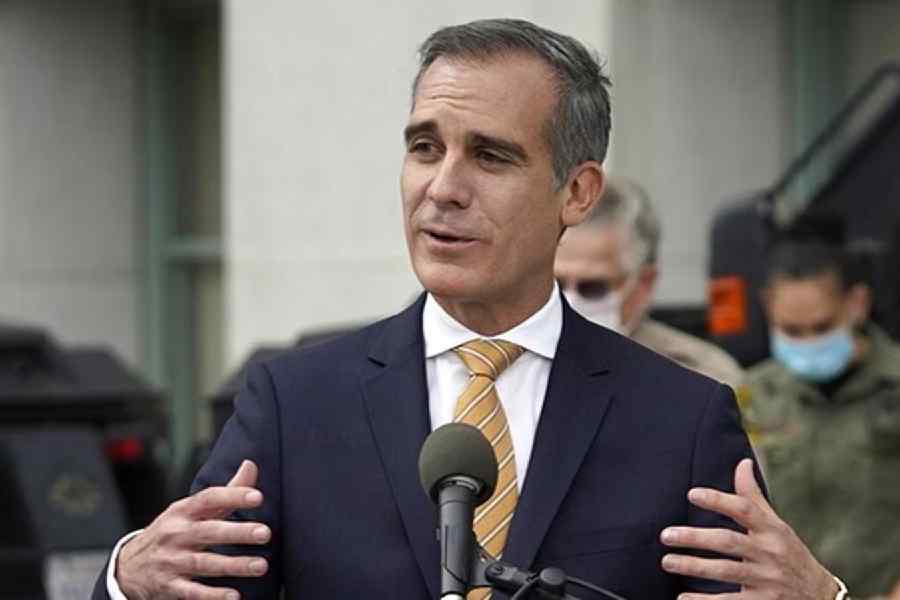The coronavirus has re-emerged in three districts, including one in Bengal, which had reported no new cases for 14 days, underscoring the fragility of an infection-free status and the challenge to contain a virus that slips with ease from person-to-person.
The three districts mentioned by Union health ministry officials are Nadia in Bengal, Patna in Bihar and Panipat in Haryana.
The Union health ministry on Saturday also listed 22 districts in 12 states, including Jalpaiguri and Kalimpong in Bengal, that have not reported fresh Covid-19 cases over the past 14 days.

It had earlier this week named 25 other districts in 15 states that too had remained free of new cases for two weeks.
A senior health official said Patna, Nadia and Panipat had now reported some positive cases after reporting none for 14 days. “We’re highlighting this because this battle will require our continuous day-to-day vigil,” said Lav Agarwal, a joint secretary in the ministry.
The country’s count of new Covid-19 patients increased by 957 on Saturday to reach 14,792 confirmed cases, among whom 2,015 have recovered and 488 have died. Maharashtra has 2,791 patients in hospital, followed by Delhi with around 1,593, and Tamil Nadu with 1,025 patients.
The health ministry said the implementation of various measures to prevent and contain the infection across the country had yielded “good results”, and cited Kodagu in Karnataka and Mahe in Puducherry as districts that had not reported fresh cases over the past 28 days.
The ministry also listed 22 districts – Lakhisarai, Gopalganj, Bhagalpur (Bihar), Dholpur and Udaipur (Rajasthan), Pulwama (Jammu and Kashmir), Thoubal (Manipur), Chitradurga (Karnataka), Hoshiarpur (Punjab), Rohtak and Charkhi Dadri (Haryana), Lohit (Arunachal Pradesh), Bhadrak and Puri (Odisha), Karimganj, Golaghat, Kamrup Rural, Nalbari and South Salmara (Assam), Jalpaiguri and Kalimpong (Bengal) and Visakhapatnam (Andhra Pradesh) -– that have reported no cases over the past 14 days.
District-level figures from the health ministry show that Jalpaiguri had five Covid-19 patients and Kalimpong seven patients. They are among eight Bengal districts that have reported a small number of patients in contrast to the four Bengal districts -– Calcutta, Howrah, East Midnapore and North 24-Parganas -– named as hotspots because of either large outbreaks or multiple clusters of infections.
However, medical experts caution that small numbers of cases do not in any way protect districts from the re-emergence of the infection as is evident from Patna, Nadia and Panipat. Patna and Nadia had six patients each and Panipat had five.
A public health expert in New Delhi said the source of the re-emergence would only be known through contact tracing -- if possible -- of the cases detected in the three districts.
Health experts have cautioned that infected people with mild symptoms -– undetected by the health system -- could potentially spread the virus even during the limited contacts that occur between people while seeking access to essential services during the lockdown.
The health ministry on Saturday also released an analysis of the 480 recorded Covid-19 deaths in the country that again underscored underlying illnesses and age as risk factors. Over 75 per cent of the dead were aged 60 or above and 83 per cent had underlying illnesses such as diabetes, high blood pressure or kidney disease.
HCQ study
India plans to conduct an observational study to assess the efficacy of the hydroxychloroquine (HCQ) treatment currently provided to patients with severe coronavirus disease, a senior Indian Council of Medical Research official said on Saturday.
Around 480 patients would be included in the study, said Raman Gangakhedkar, head of the ICMR’s epidemiology division. The health ministry’s clinical guidelines prescribe hydroxychloroquine, an anti-malarial drug, along with the antibiotic azithromycin to patients with severe Covid-19.
Several other countries too are using hydroxychloroquine on patients but rigorous clinical trials to determine the efficacy of the drug against Covid-19 have not been completed yet.
Gangakhedkar said the ICMR had also examined the effects of hydroxychloroquine on healthcare workers who were taking the drug as a preventive agent and found that 10 per cent had reported abdominal pain, 6 per cent had nausea, and 1.3 per cent showed low sugar levels.
Although the drug has been linked to adverse effects on heart rhythms, Gangakhedkar said, a significant proportion of the healthcare workers using the drug had not conducted electrocardiogram tests on themselves.










